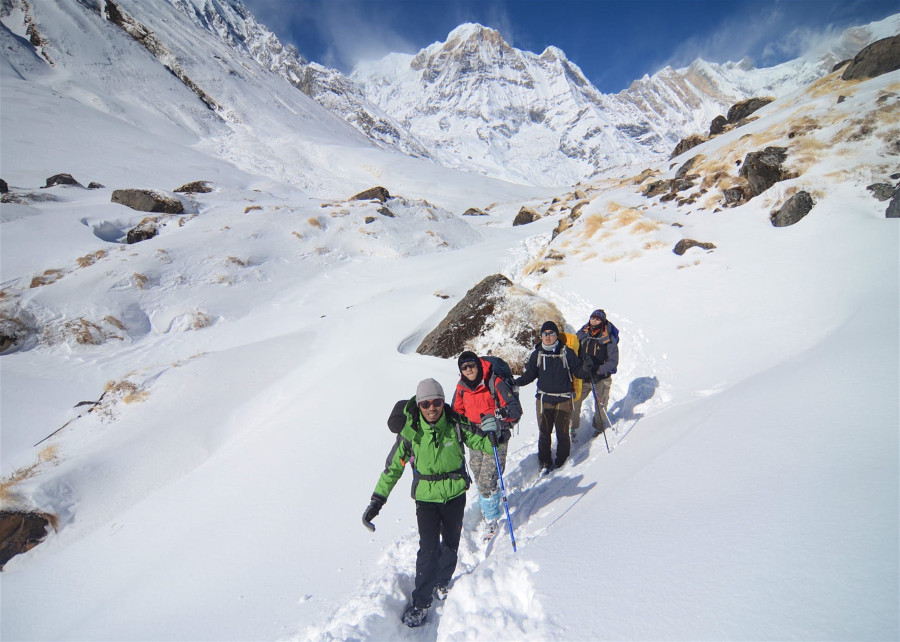Money
Trekkers return to Annapurna trail after avalanche
Travel trade entrepreneurs said that all lodges and tea houses on the route had reopened for business.
Deepak Pariyar
The route was shut down for safety reasons after the snowslide at the Hinku Cave and Deurali section swept away four South Korean trekkers and their three Nepali guides on January 17.
More than 40,000 trekkers reach the base camp annually, which is one of the shortest trekking routes in the Himalaya and is known for being a budget destination. From Tuesday, tourists started thronging the Annapurna Sanctuary trekking trail that ends at the foot of the south face of Annapurna I, the 10th highest mountain in the world.
Travel trade entrepreneurs said that all lodges and tea houses on the route had reopened for business.
Hari Bhujel, president of the Trekking Agencies Association of Nepal Western Region Chapter, said that rescue teams searching for the lost trekkers were hindered by snow that was 12 metres deep in some places.
They were eventually forced to return. “It will take a few months for the snow to melt,” he said.
Buddhiman Gurung, chairman of the Chomrong Tourism Management Committee, said that there was no risk on the route as the weather had improved and snow depths had decreased. “All workers in the hotels have returned, and trekkers will not face problems now.”
He added that the track that had been destroyed by the avalanche had been repaired after removing the snow. “There is no damage to other parts of the trail.”
Hoteliers believe that trekkers will return as the trekking season will begin in the next two weeks. The route receives less trekkers during the monsoon and winter seasons which last from June-August and December-February respectively.
"But for adventure seekers who like trekking and playing in the snow, February is the right time," said Jaganras Gurung, proprietor of Annapurna Guest House.
According to Netra Sharma, in-charge of the Annapurna Conservation Area Project Chomrong Check Post, 17 foreign trekkers have reached the base camp since Tuesday. There are around 60 hotels on the route.
The route which has been gaining popularity each passing year has been receiving hordes of trekkers, but there are few experienced guides to handle the rush.
Dilip Gurung, secretary of the committee, said that guides lack proper knowledge about the weather, and as a result, accidents keep happening on the route.
“Guides have to be trained to prevent weather-related accidents in the region,” said Dilip Gurung, who operates a hotel at Machhapuchchhre base camp.
“Today, there are guides who are well trained in terms of language, but they lack understanding of the weather and terrain.”
Gurung said that guides should at least be trained how to walk safely on snow and how to avoid avalanche-prone areas.
Hoteliers said that trekking operators should make two separate itineraries—one for people planning to trek in the winter and another for people trekking during other seasons.
Normally, it takes a week to complete the Annapurna base camp trek; but in the winter when the trails are covered in deep snow, it takes at least 10 days. They said that the urge to complete the trek early often invites disasters.
Jaganras Gurung said they had made frequent requests to the rural municipality and the Annapurna Conservation Area Project to install weather radar, but they have gone unheard.




 13.12°C Kathmandu
13.12°C Kathmandu.jpg)













%20(1).jpg&w=300&height=200)
